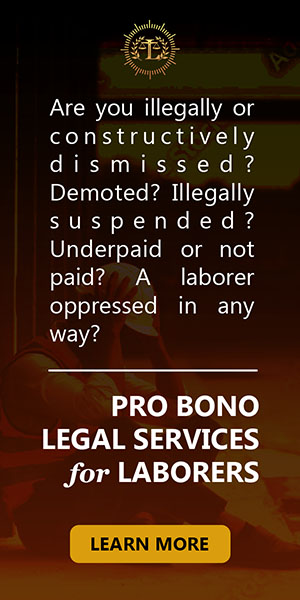PURPOSE OF ARRAIGNMENT AND PLEA
1. Double jeopardy to attach
2. Court can proceed trial in absentia in case accused absconds
WHERE SHOULD THE ACCUSED BE ARRAIGNED?
> The accused must be arraigned before the court where the complaint was filed or assigned for trial
HOW IS ARRAIGNMENT MADE?
Arraignment is made
1. In open court
2. By the judge or clerk
3. By furnishing the accused with a copy of the complaint or information
4. Reading it in the language or dialect known to him
5. Asking him whether he pleads guilty or not guilty
WHAT IS THE IMPORTANCE AND SIGNIFICANCE OF THE REQUIREMENT UNDER SECTION 1(A)?
> It must be strictly complied with as it is intended to protect the constitutional right of the accused to be informed of the nature and cause of the accusation against him
> The constitutional protection is part of due process
> Failure to observe the rules necessarily nullifies the arraignment
X IS CHARGED WITH HOMICIDE. HE PLEADS GUILTY BUT PRESENTS EVIDENCE TO ESTABLISH SELF-DEFENSE. WHAT SHOULD THE COURT DO?
> The court should withdraw the plea and enter a plea of not guilty
WHEN SHOULD THE ARRAIGNMENT BE HELD?
> The general rule is that the accused should be arraigned within 30 days from the date the court acquires jurisdiction over the person of the accused.
> The time of pendency of a motion to quash or a bill of particulars or other cause justifying suspension of the arraignment shall be excluded in computing the period.
> However in the following cases, the accused should be arranged within a shorter period, as required by law:
1. Where the complainant is about to depart from the Philippines with no definite date of return, the accused should be arraigned without delay and his trial should commence within 3 days from arraignment
2. The trial of cases under the Child Abuse Act requires that the trial should be commenced within 3 days from arraignment
3. When the accused is under preventive detention, his case shall be raffled and its records transmitted to the judge to whom the case is raffled within 3 days from the filing of the information or complaint. The accused shall be arraigned within 10 days from the date of raffle.
N.B:
1. Rearraignment needed for substitution
2. Substantial amendment needs rearraignment but formal amendment doesn’t
PRESENCE OF OFFENDED PARTY
1. Plea bargaining
2. Civil liability
3. Identification of accused
WHAT IF PRIVATE OFFENDED PARTY FAILED TO ATTEND DESPITE DUE NOTICE?
> The accused may be allowed by the court to plea guilty to a lesser offense which is necessarily included in the offense charged with the conformity of the prosecutor alone
CAN THE LAWYER OF THE ACCUSED ENTER THE PLEA FOR HIM?
> No, the accused must enter the plea himself
WHAT IS THE IMPORTANCE OF ARRAIGNMENT?
> Arraignment is the means for bringing the accused into court and informing him of the nature and cause of the accusation against
him.
> During arraignment, he is made fully aware of possible loss of freedom or of life. He is informed why the prosecuting arm of the State is mobilized against him. It is necessary in order to fix the identity of the accused, to inform him of the charge, and to him an opportunity to plead.
DURING THE ARRAIGNMENT, IS THE JUDGE DUTY-BOUND TO POINT OUT THAT AN INFORMATION IS DUPLICITOUS?
> No, the judge has no obligation to point out that an information is duplicitous or to point out any other defect in an information during arraignment
> The obligation to move to quash a defective information belongs to the accused, whose failure to do so constitutes a waiver of the right to object
X WAS TRIED FOR MURDER WITHOUT HAVING BEEN ARRAIGNED. AT THE TRIAL, X’S COUNSEL PRESENTED WITNESSES AND CROSS-EXAMINED THE PROSECUTION WITNESSES. IT WAS ONLY AFTER THE CASE WAS SUBMITTED FOR DECISION THAT X WAS ARRAIGNED. X WAS CONVICTED. CAN X INVOKE THE FAILURE OF THE COURT TO ARRAIGN HIM BEFORE TRIAL FOR QUESTIONING THE CONVICTION?
> No, the failure of the court to arraign X before trial was conducted didn’t prejudice the rights of X since he was able to present evidence and cross-examine the witnesses of the prosecution
> The error was cured by the subsequent arraignment
IS THE ACCUSED PRESUMED TO HAVE BEEN ARRAIGNED IN THE ABSENCE OF PROOF TO THE CONTRARY?
> Yes
> In view of the presumption of regularity in the performance of official duties, it can be presumed that a person accused of a crime was arraigned, in the absence of proof to the contrary
> However, the presumption of regularity is not applied when the penalty imposed is death
> When the life of a person is at stake, the court cannot presume that there was an arraignment, it has to be sure that there was one
IS THE ACCUSED ENTITLED TO KNOW IN ADVANCE THE NAMES OF ALL PROSECUTION WITNESSES?
> Under the same amended rules on pre-trial, this would be up to the trial judge’s discretion
X WAS CHARGED WITH HOMICIDE. HE ENTERED A PLEA OF NOT GUILTY. HE WAS LATER ALLOWED TO TESTIFY IN ORDER TO PROVE THE MITIGATING CIRCUMSTANCE OF INCOMPLETE SELF-DEFENSE. AT THE TRIAL, HE PRESENTED EVIDENCE TO PROVE THAT HE ACTED IN COMPLETE SELF DEFENSE. THE COURT ACQUITTED HIM. LATER, X WAS AGAIN CHARGED WITH PHYSICAL INJURIES. X INVOKED DOUBLE JEOPARDY. CAN X BE PROSECUTED AGAIN FOR PHYSICAL INJURIES?
> Yes. There was no double jeopardy. In order for double jeopardy to attach, there must have been a valid plea to the first offense.
> In this case, the presentation by X of evidence to prove self-defense had the effect of vacating the plea of guilt
> When the plea of guilt was vacated, the court should have ordered him to plead again, or at least should have directed that a new plea of not guilty be entered for him
> Because the court didn’t do this, at the time of the acquittal, there was actually no standing plea for X.
> Since there was no valid plea, there can be no double jeopardy
CAN A PERSON WHO PLEADED GUILTY STILL BE ACQUITTED?
> Yes, when an accused pleads guilty, it doesn’t necessarily follow that he is convicted
> Additional evidence independent of the guilty plea may be considered by the judge to ensure that the plea of guilt was intelligently made
> The totality of evidence should determine whether the accused should be convicted or acquitted
WHAT HAPPENS IF THE ACCUSED REFUSES TO ENTER ANY PLEA?
> The court may validly enter a plea of guilty for the accused who refuses to plead



 Spotify
Spotify  iTunes
iTunes  AppleMusic
AppleMusic  YouTube
YouTube 


